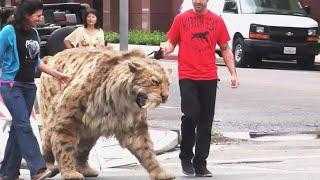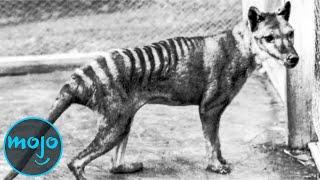5 Times Humanity Came Close To Extinction
Description
10 Times Humanity Came Close To Extinction
If you're new, Subscribe! → http://goo.gl/djmfuX
Top 5 Best is the #1 place for all your heart warming stories about amazing people that will inspire you everyday. Make sure to subscribe and never miss a single video!
#viralstory #amazingpeople #top5best
5 Times Humanity Came Close To Extinction
Humankind is 7 billion individuals strong, and we’re still growing. This staggering number might make
you think that we are safe from extinction, but that’s just not the case. Many times throughout human
history, we have had our brushes with disaster that dwindled our number so much, we were in danger
of extinction. Not only that, we’ve had near misses in history that, if they happened, would surely end
up in tragedy, and even complete annihilation of the human race. In fact, something exactly like that just
happened in the beginning of June 2020, and we didn’t even know it happened. Stay tuned for number
one to find out what happened. Here are 5 times humanity came close to extinction.
Number 5. The Big Chill
Around 195,000 years ago, the world changed. The temperature dropped in the winter, and then
dropped in the summer as well. Glaciers expanded. Entire habitats were destroyed. The era is officially
called Marine Isotope Stage 6, and informally called a “glacial stage,” but it was likely more of an “ice
desert” stage. Deserts expanded as well as glaciers, and much of the world was cold and dry.
During this time, our human ancestors in Africa split up. They probably did this intentionally as groups
had to leave or were driven out of shrinking habitable areas. It also might have possibly happened by
chance, as they were not really known for staying at the same place for an extended time. However, it
happened, and it took a huge toll on the human population. Some believe that the entire human
population shrank down to only 600 people.
The ones that did survive got both lucky and smart. They were lucky because many of them happened to
settle beside the sea in what’s now South Africa. Their particular spot of ground happened to be rich in
plants that stored their energy in starchy tubers below the surface the soil. The water beside their area
was warmish, and nourished a supply of shellfish. Between the two, humans managed to gather enough
food to get by. They helped themselves along, though. A cave called PP13B, near Pinnacle Point in South
Africa, shows evidence that the people there used the shellfish shells as tools. It’s also possible that they
heated and tempered their stone tools, making them more behaviorally modern Than we previously
thought.
Another recent study states that last humans on Earth may have survived the big chill by retreating to a
small patch of land nicknamed 'the garden of Eden'. The strip of land on Africa's southern coast - around
240 miles east of Cape Town - became the only place that remained habitable during the devastating
ice age. This also means that scientists are suggesting that all humans were given rise by this small
population who somehow clung to life.
Number 4. The Mt. Toba Eruption
Once upon a time, around 70,000 B.C., a volcano called Toba, on Sumatra, in Indonesia went off,
blowing roughly 650 miles of vaporized rock into the air. It is the largest volcanic eruption we know of,
dwarfing everything else before that, and since. That eruption dropped roughly six centimeters of ash —
the layer can still be seen on land — over all of South Asia, the Indian Ocean, the Arabian and South
China Sea. According to the Volcanic Explosivity Index, the Toba eruption scored an "8", which translates
to "mega-colossal" — that's two orders of magnitude greater than the largest volcanic eruption in
historic times at Mount Tambora in Indonesia, which caused the 1816 "Year Without a Summer" in the
northern hemisphere.
With so much ash, dust and vapor in the air, the eruption of Mt. Toba dimmed the sun for six years,
disrupted seasonal rains, choked off streams and scattered whole cubic miles of hot ash across acres
and acres of plants. Berries, fruits, trees, African game became scarce; early humans, living in East Africa
just across the Indian Ocean from Mount Toba, probably starved, and made their population plummet
to critical levels. But it didn’t end there.
The eruption also caused a massive drop in world temperature, sending the earth into another ice age.
Evidence exist that shows certain parts in the world experience drops in temperature of 20 plus degrees,
after which the great grassy plains of Africa may have shrunk way back, keeping the small bands of
humans small and hungry for hundreds, if not thousands of more years.
It’s quite hard to imagine but, if small populations of humans weren’t able to survive this catastrophe,
we wouldn’t be telling this story today.

![Close [ix] Response by Close React #COTCSZN3](https://no-mar.com/uploads/thumbs/5b66ac2f9-1.jpg)











![Top 10 [EPIC] apocalyptic threats to humanity movie scenes of all time (Humanity's End / Omnicide)](https://no-mar.com/uploads/thumbs/0e751849e-1.jpg)







Comments